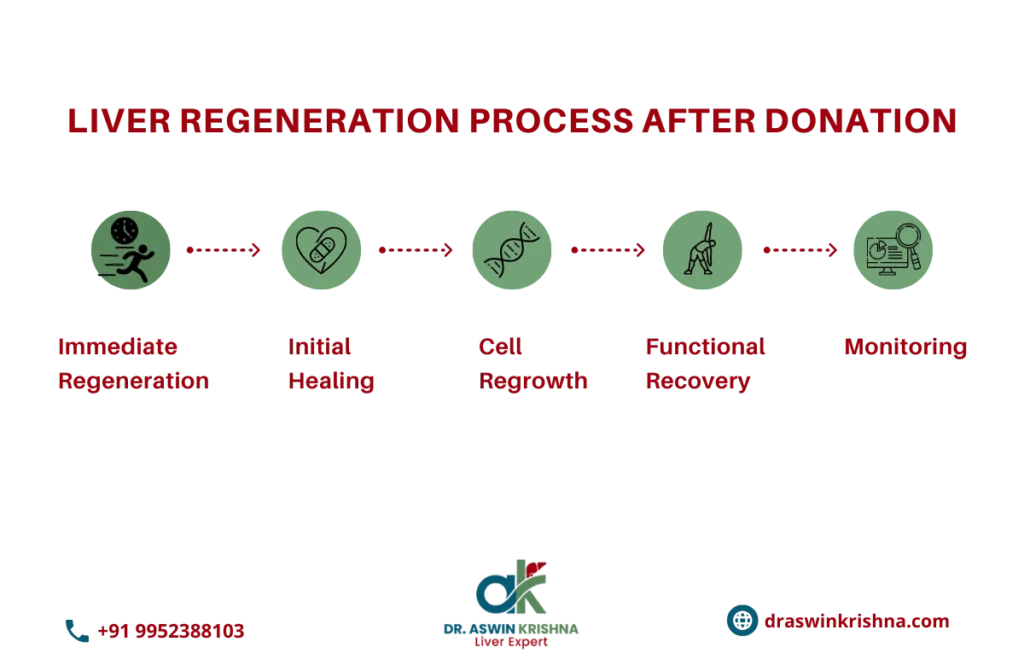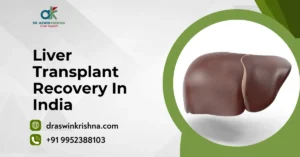A liver transplant donor plays a crucial role in saving lives. When someone suffers from liver failure, they may need a liver transplant. The liver transplant list is filled with patients waiting for a liver donor. A liver transplant donor can be either living or deceased, but living donor transplants are becoming increasingly common. In this blog, we’ll discuss the process of becoming a liver transplant donor, who can donate, and the steps involved.
What is a Living Donor Liver Transplant?
A liver transplant donor can donate a portion of their liver to a patient in need. Unlike many organ transplants that require the donation of the whole organ, a living donor liver transplant involves the donor giving part of their liver. The liver has the unique ability to regenerate, meaning both the donor’s liver and the recipient’s liver can grow back to full size. This procedure can save lives by allowing patients to get a liver before they get too sick.

Who Can a Living Donor Liver Transplant Help?
A liver transplant donor can help patients who are suffering from liver diseases, such as cirrhosis, liver cancer, or acute liver failure. These patients are often placed on the liver transplant list, waiting for a suitable donor. In cases where a liver transplant donor is a close match, a living donor transplant can significantly reduce wait times and improve outcomes for patients in need.
How Common Are Living Donor Liver Transplants?
Living donor liver transplants are becoming more common, but they still make up a smaller percentage of all liver transplants. Here are some key points about the liver transplant donor process:
- Living donor liver transplants account for around 5% to 10% of all liver transplants.
- The matching process can take time, as the donor’s liver must be a close match.
- Many patients on the liver transplant list must wait for a deceased donor, but living donors help reduce wait times.
Basic Requirements to Become a Living Liver Donor
To be a liver transplant donor, several factors are considered. The donation match must be a close one to ensure the best outcomes. Here are some requirements:
- Good overall health, free from liver disease.
- No history of alcohol abuse or serious diseases.
- A matching blood type and size.
- The donor must undergo a thorough medical evaluation to ensure the liver will regenerate after donation.
- Psychological evaluation to ensure the donor is emotionally prepared.
Benefits of Live Donor Liver Transplant
There are several benefits for both the recipient and the liver transplant donor in live donor liver transplants:
- Liver transplant donor benefits include knowing the liver is healthy and reducing wait time for the recipient.
- The recipient can avoid waiting for a deceased donor and receive a liver that’s a better match.
- Living donor liver transplants often have a lower risk of rejection compared to deceased donor organs.
Criteria for Live Donation of a Liver
Here are the key criteria to become a liver transplant donor:
- Donation match: A donor must be closely matched in blood type and size with the recipient.
- Age: Donors are usually between 18 and 60 years old.
- Health: The donor must be in excellent physical health, with no history of liver disease.
- Emotional readiness: The donor must be prepared for the surgery and recovery process.
- Evaluation: A thorough medical assessment is required to determine if the donor is fit for surgery.
Procedure Details
The matching process for a liver transplant donor involves several steps:
- Initial screening and blood tests to ensure compatibility.
- Imaging tests to assess the donor’s liver and ensure it’s healthy.
- Once a matching process is confirmed, the donor and recipient both undergo surgery.
- The donor’s liver is removed, and the liver is transplanted into the recipient.
- The donor’s liver regenerates within a few months, and both individuals usually recover with time.
Risks of Being a Living Liver Donor
While liver donation is generally safe, like any major surgery, it carries some risks. Common liver transplant donor risks include:
- Surgical Complications: Bleeding, infection, or blood clots may occur.
- Liver Function Issues: In rare cases, the remaining liver may face temporary or permanent complications.
- Digestive Problems: Some donors experience changes in digestion post-surgery.
- Psychological Impact: Emotional stress, anxiety, or depression can affect donors.
Discussing these liver transplant donor risks with your medical team ensures you’re fully prepared before making this life-saving commitment.
Liver Transplant Donor Recovery
The liver transplant donor recovery period typically takes 6-12 weeks. Here’s what to expect:
- Hospital Stay: Most donors stay in the hospital for about 5-10 days post-surgery.
- Physical Healing: Fatigue and discomfort are common in the initial weeks.
- Activity Restrictions: Avoid heavy lifting and intense exercise for up to three months.
- Emotional Support: Mental health counseling can aid in emotional recovery.
Proper medical follow-ups are essential for a smooth liver transplant donor recovery journey.
Factors That Affect the Cost
Several factors influence the liver transplant donor cost. These include:
- Pre-surgical Testing: Includes lab tests, imaging, and consultations.
- Hospital Charges: Room rates, surgical fees, and anesthesia costs.
- Post-Operative Care: Follow-up visits, medications, and physical therapy.
- Insurance Coverage: Some or all expenses may be covered, depending on the donor’s insurance plan.
It’s crucial to discuss the full breakdown of the liver transplant donor cost with your healthcare provider to avoid unexpected expenses.
Conclusion
Becoming a liver transplant donor is a life-saving decision that requires careful consideration. The matching process is crucial to ensure both the donor and recipient’s health. The liver transplant list continues to grow, and living donors play an important role in shortening wait times. For those considering becoming a liver transplant donor, it is essential to go through the medical and psychological evaluations to ensure both safety and success. Ultimately, a liver transplant donor can help improve or save someone’s life.



